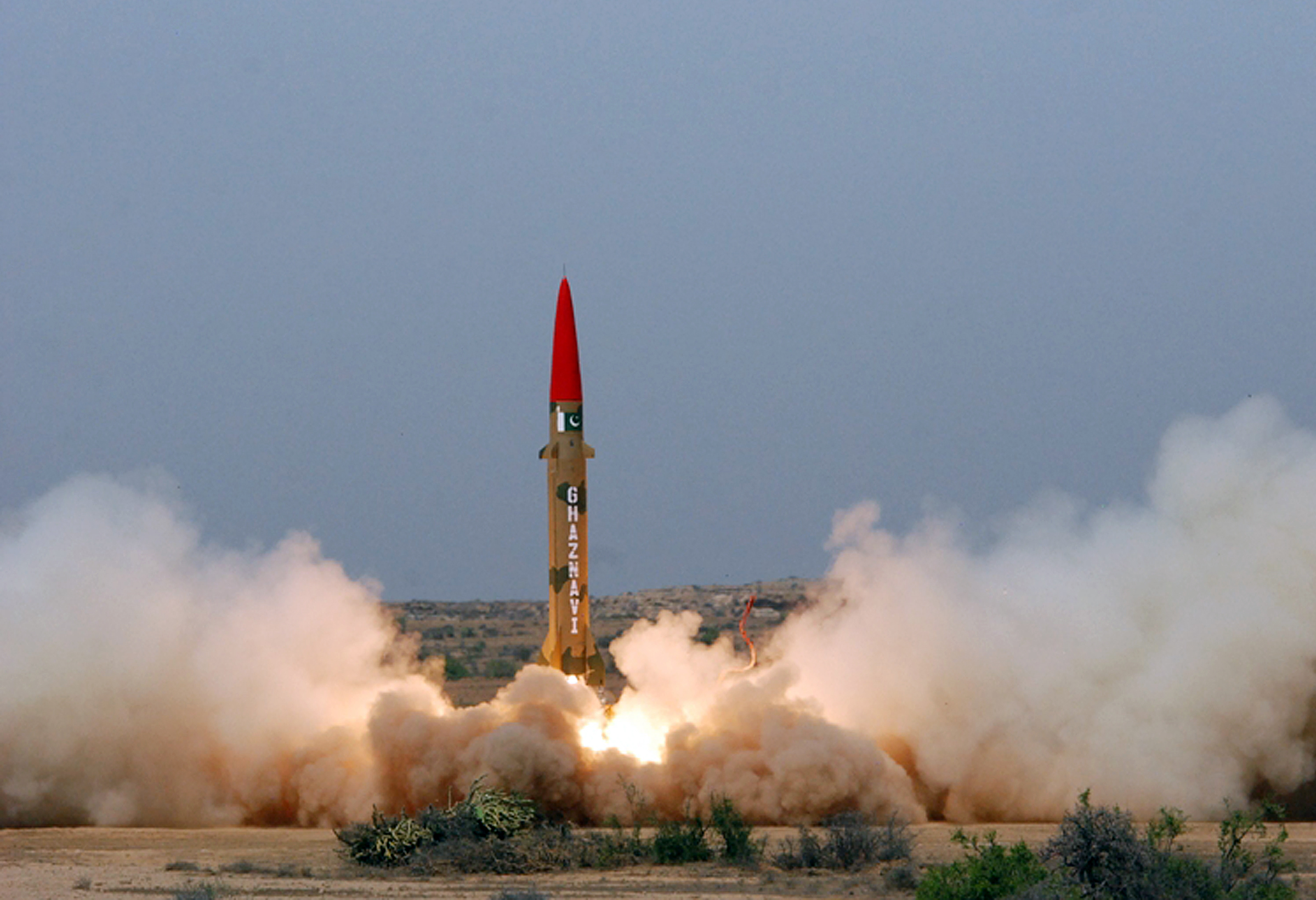
The latest commotion over Pakistan’s nuclear programme has all the ingredients that make for a ‘usual suspects’ billing.
An international wire story originating from Islamabad recently quoting Western defence experts was thick on the speculation that the country may be up to stirring the nuke pot again.
The report based on commercial satellite imagery analysed by IHS Jane’s Intelligence Review said Pakistan could be building a new uranium enrichment complex in Kahuta some 30km from the federal capital Islamabad to boost its nuclear arsenal — often bandied in the Western media as the world’s fastest growing nuclear stockpile.
The analysis is purported to have been conducted using satellite images taken by Airbus Defence and Space, a division of the Airbus Group responsible for defence and aerospace products and services, on September 28 last year and April 18 this year.
The dates here, one may emphasise, is a kind of a giveaway in this story to which one will return in a moment.
“The area of interest is approximately 1.2 hectares and is located within the secure area of the Khan Research Laboratories (KRL), in the southwestern part of the complex,” the wire says quoting the statement.
Karl Dewey, a proliferation analyst at IHS Jane’s, goes on record to say, “It is sited within an established centrifuge facility, has strong security and shows some of the structural features of a possible new uranium enrichment facility. This makes it a strong candidate for a new centrifuge facility.”
What follows is a rather interesting — if premised — mention about how Pakistan is seeking to join the coveted 48-member Nuclear Suppliers Group that seeks to prevent nuclear proliferation by controlling the export of materials, equipment and technology that can be used to manufacture atomic weapons.
Ian Stewart, head of research group Project Alpha at King’s College London, is then quoted, to give the thumbs down to the whole idea.
“It is difficult to see how these actions are consistent with the principles of the Nuclear Suppliers Group, a group of responsible nuclear exporters which Pakistan is seeking to join,” Stewart observes.
The only Pakistani source reported is a physicist — A. H. Nayyar — who goes along with the theory that if the site was indeed a centrifuge, then it’s all about weapons grade even though he throws in a caveat about not setting too much store by “imagery” alone.
To return to where this piece began, ramping up choreographed clatter about Pakistan’s nuclear programme by the Western media and its practitioners at opportune times is hardly news.
Not for the first time, it came at a rather interesting juncture.
Consider.
The report immediately followed the conclusion of a two-day conference in Washington where the five permanent members of the United Nations Security Council (P5) urged other states to sign and ratify the Comprehensive Nuclear Test Ban Treaty (CTBT). The report citing satellite imagery about a new uranium enrichment site also fashionably coincided with Prime Minister Nawaz Sharif’s visit to the United States for the UN General Assembly session where he was to meet a number of world leaders pushing for a desirable treaty (CTBT) that many of them are themselves loathe to either signing or ratifying!
The timing of the clamour about a stirring pot in Kahuta in the context of these two developments was interesting given that the purported sightings courtesy the Airbus Defence and Space noted in the IHS Jane’s were made last year and early this year.
There is obviously no bar on coincidences!
To be sure, non-proliferation goals are pertinently desirable and cannot be over-emphasised in the interest of securing a conflict-free world for present and future generations, but all of this cannot be achieved if the big fish, having got their own pound of flesh, decide to cut the small fish down to size.
That said, Pakistan’s case is not exactly cut and dried in line with the script handed out by the NPT regime. To understand its bona fides, it is imperative to start by taking into consideration the country’s geography.
Islamabad did not take a sudden fancy to gatecrash the nuclear club, like say, North Korea. Its nuclear programme evolved over time as a result of — and in direct response to — its security needs.
With India conducting its first atomic test in Pokhran in 1974, Pakistan knew it would have to seek deterrence to safeguard its territorial integrity. The 1998 round of nuclear explosions — Islamabad responding with six of its own in response to New Delhi’s five — was not a tennis score in jest.
If at all, it reinforced Pakistan’s security paradigm as directly linked to geographical considerations and a history of wars that underline the importance of deterrence.
Islamabad may have followed what to the outside world appears to be an ambitious nuclear programme with a zero-sum bent with regard to India, but what is undeniable is that it is all rooted in deterrence.
In a conventional war scenario, Pakistan would be hard-pressed to match its neighbour both in terms of resources as well as land mass to cover, but nuclear capability gives it the much needed parity to ward off such threats.
• The writer is a senior journalist based in Islamabad.